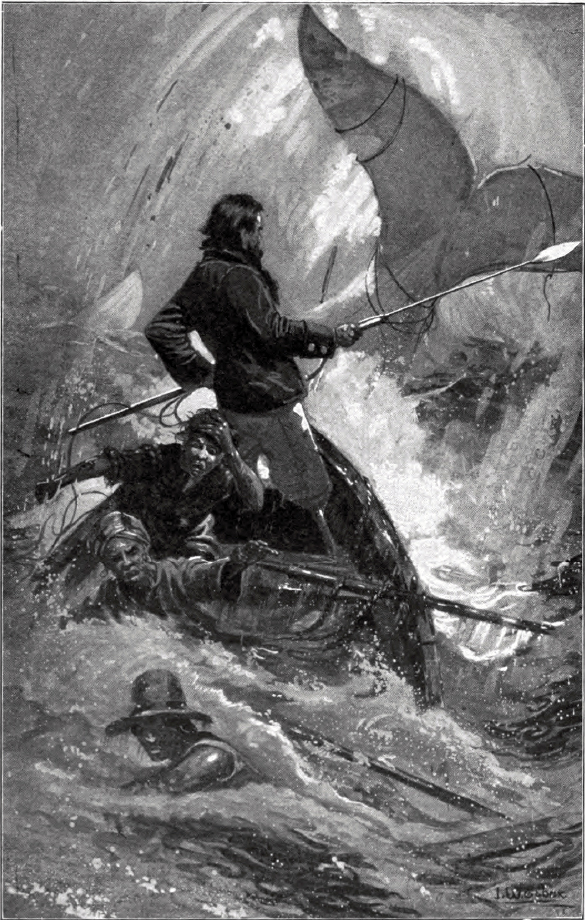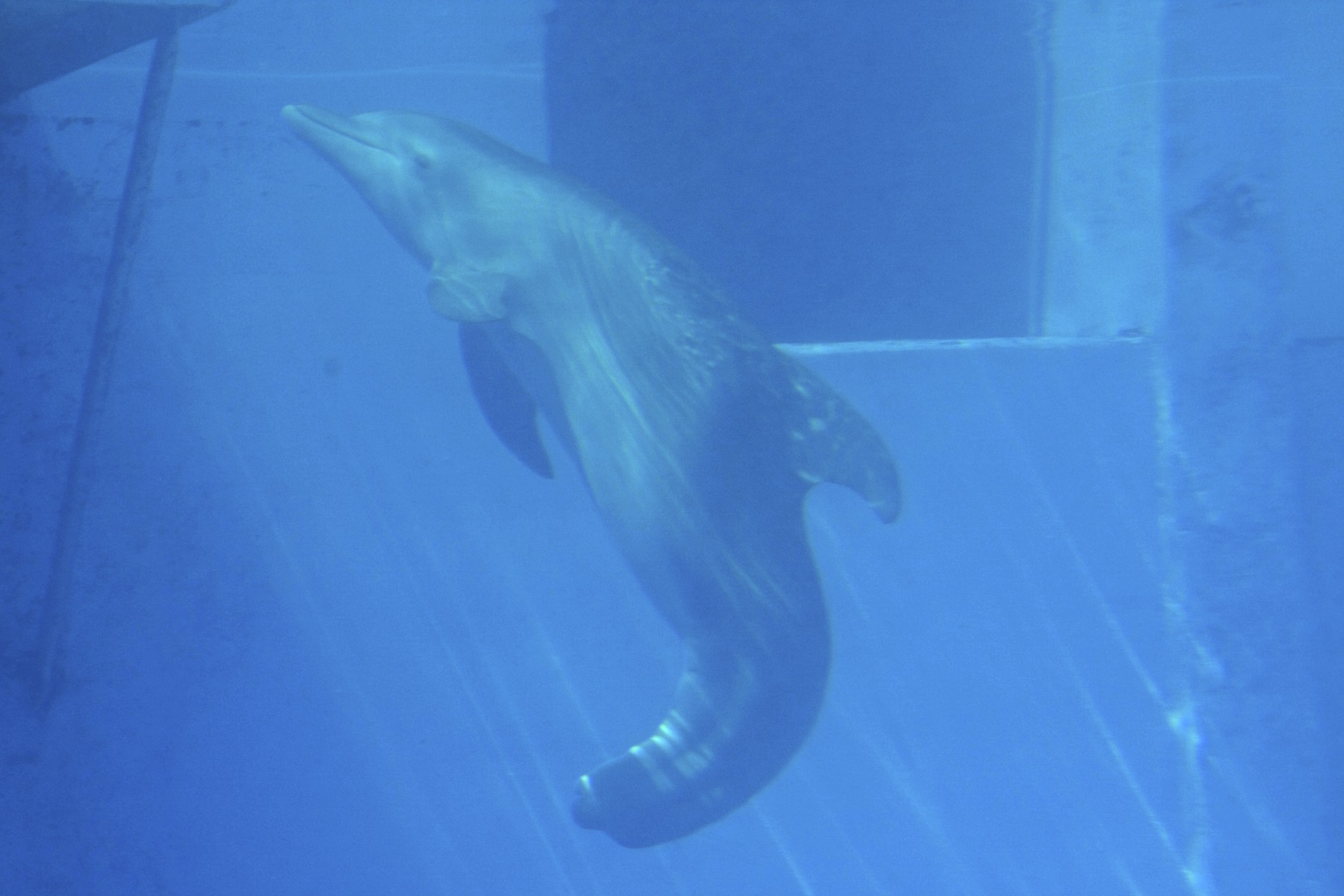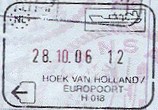|
Moby Dick (Rhine)
Moby Dick (''Willi de Waal'' in the Netherlands) was a beluga, or white whale, that caused a sensation in 1966 along the Lower Rhine and then in all of Germany and the Netherlands. It was named after the whale in the 1851 novel ''Moby-Dick'' by Herman Melville. On May 18, 1966, a few Rhine skippers near Duisburg reported a white whale in the Rhine to the water police. Officials reacted with incredulity and made the mariners take a blood alcohol test, which came up negative. In fact, there really was a , 3,500-pound white whale swimming in the Rhine 300 kilometers from the ocean and thousands of kilometers from the natural beluga habitat in arctic waters. Moby Dick, it was later surmised, had likely been captured on the East Coast of Canada and put on a freighter and sent to a zoo in England. Shortly before landing, a storm in the English channel threw the container with Moby overboard who disappeared, before reappearing months later far up the Rhine river. Wolfgang Gewalt, the d ... [...More Info...] [...Related Items...] OR: [Wikipedia] [Google] [Baidu] |
Beluga Whale
The beluga whale () (''Delphinapterus leucas'') is an Arctic and sub-Arctic cetacean. It is one of two members of the family Monodontidae, along with the narwhal, and the only member of the genus ''Delphinapterus''. It is also known as the white whale, as it is the only cetacean to regularly occur with this colour; the sea canary, due to its high-pitched calls; and the melonhead, though that more commonly refers to the melon-headed whale, which is an oceanic dolphin. The beluga is adapted to life in the Arctic, with anatomical and physiological characteristics that differentiate it from other cetaceans. Amongst these are its all-white colour and the absence of a dorsal fin, which allows it to swim under ice with ease. It possesses a distinctive protuberance at the front of its head which houses an animal echolocation, echolocation organ called the Melon (whale), melon, which in this species is large and deformable. The beluga's body size is between that of a dolphin and a true ... [...More Info...] [...Related Items...] OR: [Wikipedia] [Google] [Baidu] |
Duisburg Zoo
The Duisburg Zoo, founded on 12 May 1934, is one of the largest zoological gardens in Germany. It is especially well known for its dolphinarium and, since 1994, for breeding koalas. Far less well known are the breeding successes in other areas, for example, with fossas (carnivorous mammals from Madagascar) and red river hogs. The zoo is located in the northern part of the Duisburg urban forest on the border with Mülheim on the Ruhr. Federal highway A 3 divides the zoo into western and an eastern parts, which are joined by a leafy country bridge. The highway is scarcely noticeable to the visitors. History The Duisburg Zoo was founded in 1934 as the ''Duisburg-Hamborner Tierpark am Kaiserberg''. In 1936, the zoo began to grow from a small animal park with its first (loaned) elephant. With the beginning of World War II in 1939, the zoo had to be closed. Only in 1946 was the zoo re-opened with animals loaned from the Hellabrunn Zoo in Munich. In 1952, the zoo could register the ... [...More Info...] [...Related Items...] OR: [Wikipedia] [Google] [Baidu] |
Individual Beluga Whales
An individual is that which exists as a distinct entity. Individuality (or self-hood) is the state or quality of being an individual; particularly (in the case of humans) of being a person unique from other people and possessing one's own needs or goals, rights and responsibilities. The concept of an individual features in diverse fields, including biology, law, and philosophy. Etymology From the 15th century and earlier (and also today within the fields of statistics and metaphysics) ''individual'' meant " indivisible", typically describing any numerically singular thing, but sometimes meaning "a person". From the 17th century on, ''individual'' has indicated separateness, as in individualism. Law Although individuality and individualism are commonly considered to mature with age/time and experience/wealth, a sane adult human being is usually considered by the state as an "individual person" in law, even if the person denies individual culpability ("I followed instruct ... [...More Info...] [...Related Items...] OR: [Wikipedia] [Google] [Baidu] |
List Of Individual Cetaceans
Cetaceans are the animals commonly known as whales, dolphins, and porpoises. This list includes individuals from real life or fiction, where fictional individuals are indicated by their source. It is arranged roughly taxonomically. Baleen whales Rorquals * 52-hertz whale (may be a blue whale hybrid) Blue whales * KOBO Fin whales * Moby Joe, a fin whale who became trapped in Newfoundland, the subject of Farley Mowat's 1972 book ''A Whale for the Killing''. Humpback whales * Delta and Dawn * George and Gracie from '' Star Trek IV: The Voyage Home'' * Humphrey the Whale * Migaloo * The Montreal whale * Mister Splashy Pants * Tay Whale Gray whales * Bonnet, Crossbeak, and Bone or Putu, Siku, and Kanik (in Inupiaq), or Fred, Wilma, and Bamm-Bamm in the book ''Big Miracle'' and film adaptation * Klamath River Whales Toothed whales Beaked whales Northern Bottlenose Whales * River Thames whale Dolphins * Delphinus from Greek mythol ... [...More Info...] [...Related Items...] OR: [Wikipedia] [Google] [Baidu] |
Environmental Protection
Environmental protection is the practice of protecting the natural environment by individuals, organizations and governments. Its objectives are to conserve natural resources and the existing natural environment and, where possible, to repair damage and reverse trends. Due to the pressures of overconsumption, population growth and technology, the biophysical environment is being degraded, sometimes permanently. This has been recognized, and governments have begun placing restraints on activities that cause environmental degradation. Since the 1960s, environmental movements have created more awareness of the multiple environmental problems. There is disagreement on the extent of the environmental impact of human activity, so protection measures are occasionally debated. Approaches to environmental protection Voluntary environmental agreements In industrial countries, voluntary environmental agreements often provide a platform for companies to be recognized for moving beyond ... [...More Info...] [...Related Items...] OR: [Wikipedia] [Google] [Baidu] |
Environmental Movement
The environmental movement (sometimes referred to as the ecology movement), also including conservation and green politics, is a diverse philosophical, social, and political movement for addressing environmental issues. Environmentalists advocate the just and sustainable management of resources and stewardship of the environment through changes in public policy and individual behaviour. In its recognition of humanity as a participant in (not enemy of) ecosystems, the movement is centered on ecology, health, and human rights. The environmental movement is an international movement, represented by a range of organizations, from enterprises to grassroots and varies from country to country. Due to its large membership, varying and strong beliefs, and occasionally speculative nature, the environmental movement is not always united in its goals. The movement also encompasses some other movements with a more specific focus, such as the climate movement. At its broadest, the ... [...More Info...] [...Related Items...] OR: [Wikipedia] [Google] [Baidu] |
Beluga Whale
The beluga whale () (''Delphinapterus leucas'') is an Arctic and sub-Arctic cetacean. It is one of two members of the family Monodontidae, along with the narwhal, and the only member of the genus ''Delphinapterus''. It is also known as the white whale, as it is the only cetacean to regularly occur with this colour; the sea canary, due to its high-pitched calls; and the melonhead, though that more commonly refers to the melon-headed whale, which is an oceanic dolphin. The beluga is adapted to life in the Arctic, with anatomical and physiological characteristics that differentiate it from other cetaceans. Amongst these are its all-white colour and the absence of a dorsal fin, which allows it to swim under ice with ease. It possesses a distinctive protuberance at the front of its head which houses an animal echolocation, echolocation organ called the Melon (whale), melon, which in this species is large and deformable. The beluga's body size is between that of a dolphin and a true ... [...More Info...] [...Related Items...] OR: [Wikipedia] [Google] [Baidu] |
Rhine (Rhine River) - Geo
), Surselva, Graubünden, Switzerland , source1_coordinates= , source1_elevation = , source2 = Rein Posteriur/Hinterrhein , source2_location = Paradies Glacier, Graubünden, Switzerland , source2_coordinates= , source2_elevation = , source_confluence = Reichenau , source_confluence_location = Tamins, Graubünden, Switzerland , source_confluence_coordinates= , source_confluence_elevation = , mouth = North Sea , mouth_location = Netherlands , mouth_coordinates = , mouth_elevation = , progression = , river_system = , basin_size = , tributaries_left = , tributaries_right = , custom_label = , custom_data = , extra = The Rhine ; french: Rhin ; nl, Rijn ; wa, Rén ; li, Rien; rm, label=Sursilvan, Rein, rm, label=Sutsilvan and Surmiran, Ragn, rm, label= Rumantsch Grischun, Vallader and Puter, Rain; it, Reno ; gsw, Rhi(n), including in ... [...More Info...] [...Related Items...] OR: [Wikipedia] [Google] [Baidu] |
Hook Of Holland
Hook of Holland ( nl, Hoek van Holland, ) is a town in the southwestern corner of Holland, hence the name; ''hoek'' means "corner" and was the word in use before the word ''kaap'' – "cape", from Portuguese ''cabo'' – became Dutch. The English translation using Hook is a false cognate of the Dutch Hoek, but has become commonplace (in official government records in English, the name tends not to get translated and Hoek van Holland is used). It is located at the mouth of the New Waterway shipping canal into the North Sea. The town is administered by the municipality of Rotterdam as a district of that city. Its district covers an area of 16.7 km2, of which 13.92 km2 is land. On 1 January 1999 it had an estimated population of 9,400. Towns near "the Hook" ( nl, "de Hoek") include Monster, 's-Gravenzande, Naaldwijk and Delft to the northeast, and Maassluis to the southeast. On the other side of the river is the Europort and the Maasvlakte. The wide sandy beach, one sectio ... [...More Info...] [...Related Items...] OR: [Wikipedia] [Google] [Baidu] |
Bonn
The federal city of Bonn ( lat, Bonna) is a city on the banks of the Rhine in the German state of North Rhine-Westphalia, with a population of over 300,000. About south-southeast of Cologne, Bonn is in the southernmost part of the Rhine-Ruhr region, Germany's largest metropolitan area, with over 11 million inhabitants. It is a university city and the birthplace of Ludwig van Beethoven. Founded in the 1st century BC as a Roman settlement in the province Germania Inferior, Bonn is one of Germany's oldest cities. It was the capital city of the Electorate of Cologne from 1597 to 1794, and residence of the Archbishops and Prince-electors of Cologne. From 1949 to 1990, Bonn was the capital of West Germany, and Germany's present constitution, the Basic Law, was declared in the city in 1949. The era when Bonn served as the capital of West Germany is referred to by historians as the Bonn Republic. From 1990 to 1999, Bonn served as the seat of government – but no longer capital – ... [...More Info...] [...Related Items...] OR: [Wikipedia] [Google] [Baidu] |
Lock (water Transport)
A lock is a device used for raising and lowering boats, ships and other watercraft between stretches of water of different levels on river and canal waterways. The distinguishing feature of a lock is a fixed chamber in which the water level can be varied; whereas in a caisson lock, a boat lift, or on a canal inclined plane, it is the chamber itself (usually then called a caisson) that rises and falls. Locks are used to make a river more easily navigable, or to allow a canal to cross land that is not level. Later canals used more and larger locks to allow a more direct route to be taken. Pound lock A ''pound lock'' is most commonly used on canals and rivers today. A pound lock has a chamber with gates at both ends that control the level of water in the pound. In contrast, an earlier design with a single gate was known as a flash lock. Pound locks were first used in China during the Song Dynasty (960–1279 AD), having been pioneered by the Song politician and naval en ... [...More Info...] [...Related Items...] OR: [Wikipedia] [Google] [Baidu] |
Wolfgang Gewalt
Wolfgang Gewalt (28 October 1928 – 26 April 2007) was a German zoologist, author and former director of the Duisburg Zoo. Biography After the study of zoology, botany, chemistry and anthropology, his main focus was research of the great bustard. He recorded his observations in the breeding grounds and his experience with hand bred great bustards in several publications. Moreover, he was chief assistant at the Berlin Zoo. In 1966, he became director of the Duisburg Zoo and landed in the headlines in May 1966 when the white whale Moby Dick strayed into the Rhine. After futile attempts to capture Moby Dick, Wolfgang Gewalt came in for ever more negative criticism. A few newspapers even demanded: "Arrest Wolfgang Gewalt". In June 1966, the whale fortunately succeeded in swimming back to the North Sea. In 1969, Gewalt led an expedition to Canada and brought back the first beluga to Duisburg. For this he reaped angry criticism. In the same year Wolfgang Gewalt participated ... [...More Info...] [...Related Items...] OR: [Wikipedia] [Google] [Baidu] |




.jpg)





